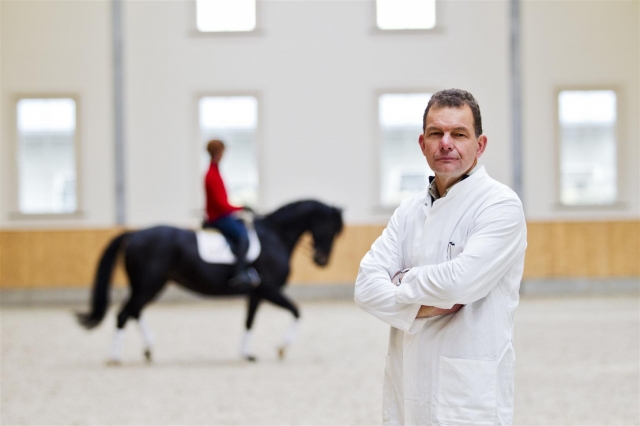
Does Equine Lameness Need To Be Redefined?
Professor van Weeren, commenting in the current issue of the Equine Veterinary Journal (EVJ), suggests that equine lameness needs to be redefined to reflect new digital assessment techniques that use preset parameters to detect gait asymmetries.1 http://onlinelibrary.wiley.com/doi/10.1111/evj.12715/full
The traditional method for detecting equine lameness is subjective, using expert visual evaluation of gait to identify the presence or absence and degree of asymmetries. The lame horse is described as having a disorder, defect or loss of function and this clinical diagnosis has associated welfare implications if the horse is still asked to perform.
Advanced computer technology is starting to change all this. Optic motion capture or the use of inertial measurement units (IMUs) is now enabling the detailed study and quantification of the horse’s gait; objective assessment against preset thresholds. The paper “Do we have to redefine lameness in the era of quantitative gait analysis?” by Professor René Van Weeren and collaborators and published in the autumn issue of the EVJ, points out that while these digital systems can overcome the temporal and spatial limitations of the human eye they simply rely on one or a number of set gait parameters to decide about lameness and this can present obstacles.
Thresholds are forcibly based on a limited reference population, which doesn’t adequately reflect the millions of horses in the world. The individual environmental and mental conditions for each horse and its day-to-day gait variations are also not accounted for. On this basis to use the term ‘lame’ because a horse demonstrates a subtle gait alteration, causing it to fall below the threshold, could be inappropriate, particularly as it may not affect the horse’s welfare in any way.
Professor Celia Marr, Editor of the Equine Veterinary Journal said: “An important first step is for researchers and clinicians to start to discriminate clearly between ‘asymmetry’ and ‘lameness’ and not to use these as interchangeable terms when interpreting gait analysis data. Asymmetry is often, but not always, a hallmark of lameness, but is not a clinical term, whereas lameness is.”
Professor Van Weeren continued: “Digital equine gait analysis is sure to become an indispensable additional tool for clinical decision-making. At this early stage we must define the use of terminology in order to avoid confusion and to prevent the formation of wrong perceptions. Using the term “lame” for any horse falling beyond thresholds set for quantitative gait analysis or not showing the ideal motion pattern when assessed clinically is inadvisable. We should reserve the use of that term for horses deemed unfit to compete based on a comprehensive assessment of the animal that includes, but does not rely entirely on, the appreciation of the degree of gait asymmetry.”
Reference
1 Do we have to redefine lameness in the era of quantitative gait analysis? P.R. van Weeren, T. Pfau, M. Rhodin, L. Roepstorff, F. Serra Bragança, M.A. Weishaupt. Equine Veterinary Journal 49, 567-569.
The paper is available free online at: http://onlinelibrary.wiley.com/doi/10.1111/evj.12715/full
More from BEVA

 8 years ago
8 years ago  1469 views
1469 views
